exhibits: human physiology
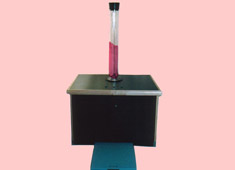 BLOOD VOLUME
BLOOD VOLUME
How much blood do you think you have in your body? Find out and be surprised!Download a Printable Version (PDF)
Related exhibits: Mostly Water
Designed and built by Exhibiteers Inc.
Client: Science Museum of Minnesota, St. Paul, MN
Graphic design by Science Museum of Minnesota
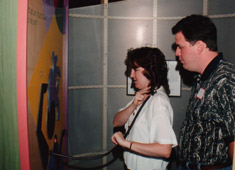 BODY SOUNDS
BODY SOUNDS
Listen closely to all the sounds in your body -they might surprise you! From gut gurgles to hiccups, from burps to creaky joints. Your body can be a very noisy place!
Download a Printable Version (PDF)
Related exhibits: Feel the Beat
Designed and built by Exhibiteers Inc.
Client: Arizona Science Center, Phoenix, Arizona
Millwork and graphics by Arizona Science Center
 BONE DENSITY
BONE DENSITY
What do calcium, vitamin D, weight bearing exercise and your age have in common? They all affect your bone density. Adjust these variables to see how they might affect yours.Download a Printable Version (PDF)
Designed and built by: Exhibiteers Inc.
Client: Boston Museum of Science, for Secrets of Aging
Millwork and graphics by: Boston Museum of Science and Mystic Scenic Studios
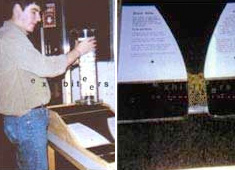 DNA SIZE SORTER
DNA SIZE SORTER
This exhibit demonstrates what's behind the process of DNA testing and identification.Download a Printable Version (PDF)
Related exhibit: Your Father's Nose
Designed and built by Gary Renaud
Client: Exploratorium for the Diving into the Gene Pool Exhibit
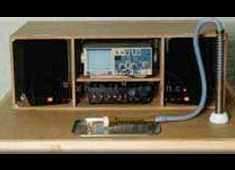 EMG MUSCLE PROBE
EMG MUSCLE PROBE
How does your brain control your muscles to make them work? Use Muscle Probe to investigate the electrical impulses that do the job.Download a Printable Version (PDF)
Related exhibit: Grip Strength, Pedal a Bicycle
Designed and built by Exhibiteers Inc.
Client: Science Museum of Minnesota, St. Paul , Minnesota
Graphic design by Science Museum of Minnesota
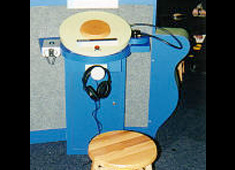 FEEL THE BEAT
FEEL THE BEAT
You can actually feel and hear the thumping rhythm of your own heart beat or that of someone else's. The sensitive stethoscope easily picks up your heart when placed anywhere on your chest. The sophisticated audio equipment maintains a controlled volume to prevent damage to the speaker from any creative use of this microphone system.Download a Printable Version (PDF)
Related exhibits: Body Sounds
Designed and built by Exhibiteers Inc.
Client: Boston Museum of Science - Secrets of Aging Traveling Exhibit
Cabinetry and graphics by Boston Museum of Science and Mystic Scenic Studios
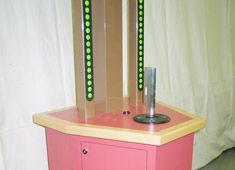 GRIP STRENGTH
GRIP STRENGTH
How strong is your hand grip? Squeeze up to 300 lbs if you can!Download a Printable Version (PDF)
Designed and built by Exhibiteers Inc.
Clients: Science World, British Columbia
Science Technology Center, Jakarta, Indonesia
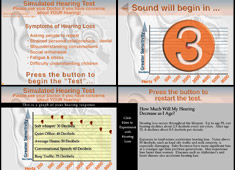 HEARING RESPONSE
HEARING RESPONSE
Measure your hearing sensitivity over a frequency range of 800Hz to 16000Hz. Visitors wear headphones and are presented with a series of tones that gradually increase in volume and when a tone is first heard, they press a button to acknowledge it. A graph is then generated indicating their hearing sensitivity to various frequencies of sound.Download a Printable Version (PDF)
Related exhibits: Sound Rich Scene
Software designed by J.G. Broughton
in cooperation with Exhibiteers Inc.
Client: Boston Museum of Science, Secrets of Aging
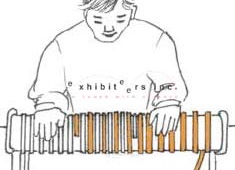 HOT COLD SENSORS
HOT COLD SENSORS
Visitors touch the cold or warm areas of the copper coils which produce the expected cold or warm sensations. However in the center area, the warm and cold coils are alternated so that visitors experience warm and cold simultaneously. This effect produces an immediate and contradictory sensation of extreme heat that triggers a pain sensation that isn't painful!Download a Printable Version (PDF)
Designed and built by Exhibiteers Inc.
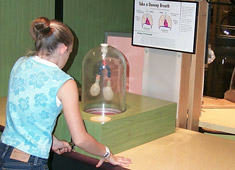 HOW LUNGS WORK
HOW LUNGS WORK
By moving a diaphragm up and down, the balloons which represent the lungs, inflate and deflate in a manner similar to our own lungs.Download a Printable Version (PDF)
Designed and built by Exhibiteers Inc.
Client: Arizona Science Center, Phoenix, Arizona
Cabinetry and graphics by Arizona Science Center
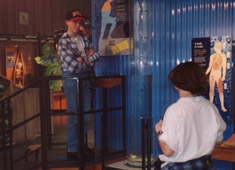 MOSTLY WATER
MOSTLY WATER
Why do we need clean water? See how muchof your body is just water to know why. A 6 foot glass tube fills with the approximate amount of water in your body. Visitors select male, female or child under 7 years of age to begin.
Download a Printable Version (PDF)
Designed and built as part of the Ontario Science Centre exhibit development team for LIVING EARTH
 PEDAL A BICYCLE
PEDAL A BICYCLE
Pedal a bike. Simple right!Now try to do it by controlling four uncoordinated muscle groups connected to a pair of mechanical legs mounted on a bike. Try it and you quickly learn it's not quite so easy.
Download a Printable Version (PDF)
Related exhibit: Skeleton on a Bike
Original concept by Don Trollope
Designed and built by Exhibiteers Inc.
Client: Arizona Science Center, Phoenix, Arizona
Base and graphics by Arizona Science Center
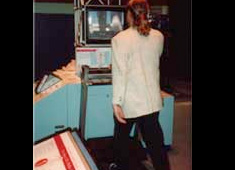 SEE YOUR WALK
SEE YOUR WALK
Visitor's control the speed of their walk on a motorized treadmill while camera's focus on their feet and display their walking pattern on a monitor in front of them. It is the only way to accurately observe your own gait.Download a Printable Version (PDF)
Related exhibit: Sports
Designed and built as part of the Ontario Science Centre development team for SPORTS
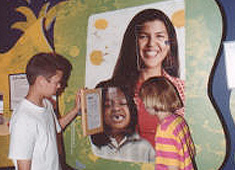 SNEEZERS
SNEEZERS
Why are biological excretions important to us? Take your nose for instance or more specifically your nasal passage. It produces a mucus, a very sticky substance, that captures and surrounds potentially harmful air born particles before they reach your lungs. When you sneeze, it's your body's way of clearing your nasal passages and getting rid of those collected particles. Experience a sneeze or two and find out more!Download a Printable Version (PDF)
Design and built by Exhibiteers Inc.
Client: Arizona Science Center, Phoenix, Arizona
Graphics design and millwork by Arizona Science Center
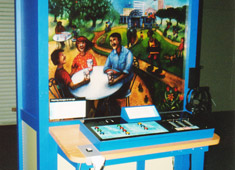 SOUND RICH SCENE
SOUND RICH SCENE
How does a change in frequency and/or volume affect your hearing sensitivity to normal sounds? Adjust these variables while selecting a variety of common sounds to "hear" how. Download a Printable Version (PDF)
Related Exhibit: Hearing Response and Age
Designed and built by: Exhibiteers Inc.
Client: Boston Museum of Science, Cambridge - Secrets of Aging
Millwork and graphics by Boston Museum of Science and Mystic Scenic Studios
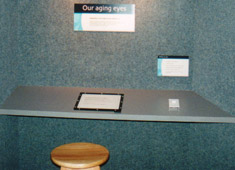 YOUR AGING EYES
YOUR AGING EYES
How does a change in frequency and/or volume affect your hearing sensitivity to normal sounds? Adjust these variables while selecting a variety of common sounds to "hear" how. Download a Printable Version (PDF)
Related Exhibit: Hearing Response and Age
Designed and built by: Exhibiteers Inc.
Client: Boston Museum of Science, Cambridge - Secrets of Aging
Millwork and graphics by Boston Museum of Science and Mystic Scenic Studios
